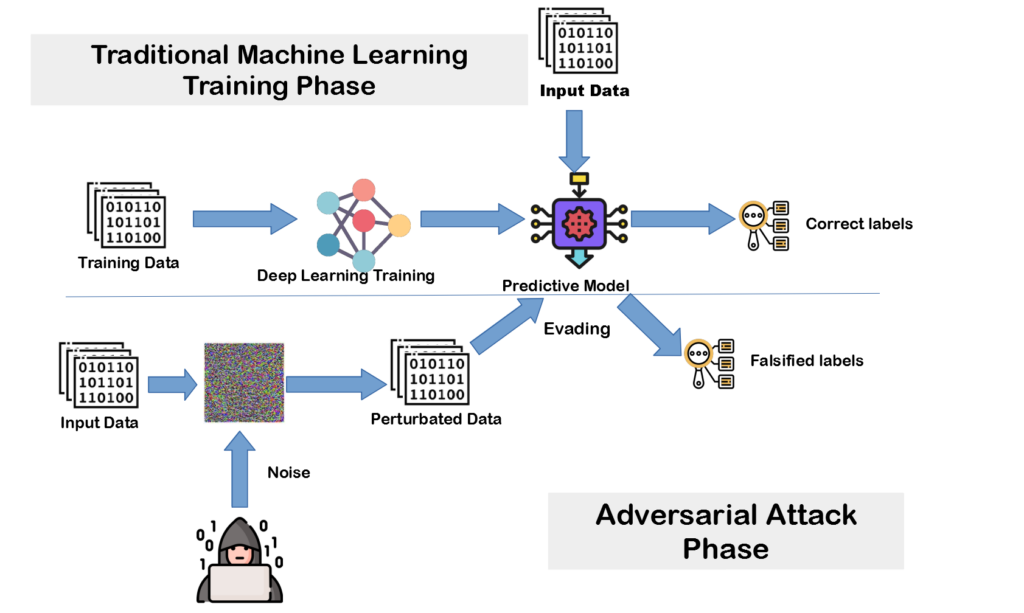
Adversarial training is a machine learning technique used to improve the robustness and accuracy of artificial intelligence models by exposing them to adversarial examples. These examples are carefully crafted inputs that are designed to deceive the model into making incorrect predictions. By training the model on both clean data and adversarial examples, it learns to better generalize and make more accurate predictions in real-world scenarios.
The concept of adversarial training was first introduced by researchers in the field of computer vision as a way to address the vulnerability of deep learning models to adversarial attacks. These attacks can be as simple as adding imperceptible noise to an image or as complex as manipulating the input data in a way that causes the model to misclassify it.
During adversarial training, the model is trained on a combination of clean data and adversarial examples generated using techniques such as the Fast Gradient Sign Method (FGSM) or the Projected Gradient Descent (PGD) algorithm. This process forces the model to learn to make predictions that are robust to small perturbations in the input data.
One of the key benefits of adversarial training is that it can help improve the generalization capabilities of AI models. By exposing the model to a diverse set of inputs, including adversarial examples, it learns to make predictions that are more robust and reliable in real-world scenarios where the data may be noisy or corrupted.
Adversarial training has been successfully applied in a variety of domains, including computer vision, natural language processing, and speech recognition. In computer vision, adversarial training has been used to improve the accuracy of image classification models and object detection systems. In natural language processing, it has been used to enhance the performance of sentiment analysis and text generation models. And in speech recognition, adversarial training has been employed to improve the accuracy of speech-to-text systems.
Overall, adversarial training is a powerful technique for improving the robustness and accuracy of AI models. By training models on a combination of clean data and adversarial examples, researchers and practitioners can create more reliable and trustworthy AI systems that perform well in real-world scenarios.
1. Improved Robustness: Adversarial training helps improve the robustness of AI models by exposing them to adversarial examples, which are carefully crafted inputs designed to deceive the model.
2. Enhanced Security: By training AI models using adversarial examples, organizations can better protect their systems against potential attacks and security breaches.
3. Better Generalization: Adversarial training can help AI models generalize better to unseen data by teaching them to be more resilient to unexpected inputs.
4. Increased Performance: AI models trained using adversarial training often show improved performance on real-world tasks, as they are better equipped to handle challenging and unpredictable scenarios.
5. Cutting-Edge Research: Adversarial training is a key area of research in the field of AI, with ongoing advancements and developments leading to more sophisticated techniques for training robust and reliable models.
1. Adversarial training is commonly used in image recognition systems to improve the model’s ability to accurately classify images, even when they have been altered or distorted.
2. Adversarial training is used in cybersecurity to detect and defend against malicious attacks on AI systems, such as adversarial examples designed to fool the model.
3. Adversarial training is applied in natural language processing to enhance the model’s ability to generate coherent and accurate text, even when faced with adversarial inputs.
4. Adversarial training is utilized in autonomous vehicles to improve the model’s ability to make safe and reliable decisions in the presence of unexpected or adversarial road conditions.
5. Adversarial training is used in fraud detection systems to enhance the model’s ability to identify and prevent fraudulent activities by learning from adversarial patterns in the data.
There are no results matching your search.
ResetThere are no results matching your search.
Reset